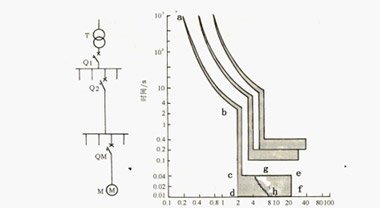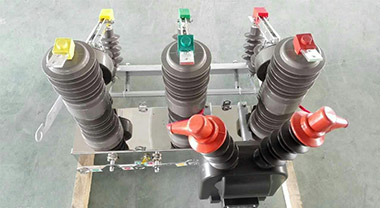The role of oil in oil circuit breakers
The oil in the oil-rich circuit breaker and the oil-less circuit breaker have the same function (both transformer oil), which is mainly used for insulation and arc extinguishing. If it is mainly used for insulation and heat dissipation in the transformer.
Both oil-rich and oil-less circuit breakers must be filled with oil, and their functions are arc extinguishing, heat dissipation and insulation. Its danger is not only that it may cause an explosion in the event of a failure, but also that after the explosion, the high-temperature oil in the oil circuit breaker will splash, forming a large area of combustion, causing a phase-to-phase short circuit or a short circuit to the ground, and destroying the normal operation of the power system. Enlarge the accident and even cause serious personal injury or death.
Arc extinguishing process:
When the movable contact and the static contact of the circuit breaker are separated from each other, an arc is generated. The high temperature of the arc causes the nearby insulating oil to evaporate and pyrolyze, forming a gas (mainly hydrogen) with strong arc extinguishing ability and relatively high pressure. High bubbles make the arc extinguish quickly.
The reasons for the explosion and combustion of oil circuit breakers are as follows:
(1) The oil level is too low. The oil layer from the contact of the oil circuit breaker to the oil level is too thin, and the combustible gas decomposed by the arc action is not cooled well. This part of the combustible gas enters the space under the top cover and mixes with air to form explosive gas , It may explode and burn under its own high temperature.
(2) The oil level in the fuel tank is too high. The released gas cannot be buffered in the fuel tank, resulting in excessive pressure, which may also cause the fuel tank to explode and catch fire.
(3) The insulation strength of the oil is deteriorated. Excessive impurities or moisture may cause internal flashover of the oil circuit breaker.
(4) Improper adjustment of the operating mechanism. Failure of components will cause slow movement during operation or poor contact after closing. When the arc cannot be cut off and extinguished in time, too much combustible gas is generated in the fuel tank, which may cause explosion and combustion.
(5) Small breaking capacity The breaking capacity of the oil switch is a very important parameter for the transmission and distribution system. When the interrupting capacity is less than the short-circuit capacity of the system, the circuit breaker is unable to cut off the strong short-circuit current of the system, causing the circuit breaker to burn and explode, causing a major accident in the power transmission and distribution system.
(6) The incoming and outgoing wires of other oil circuit breakers pass through the insulating sleeve. When the insulating sleeve and the fuel tank cover, the fuel tank cover and the fuel tank body are not tightly sealed, the water in the fuel tank is damp, or the fuel tank is dirty, and the insulating sleeve has machinery. Damage can cause an explosion or fire accident caused by a short circuit to the ground.
Therefore, the circuit breaker should be checked strictly before installation to see if it meets the technical requirements of the manufacturer. The breaking capacity of the circuit breaker must be greater than the short-circuit capacity of the circuit where the circuit breaker is installed. During maintenance, operation tests should be carried out to ensure that the parts are flexible and reliable, and the synchronization of the three-phase action should be adjusted. The connection between the circuit breaker and the electrical circuit should be tight, and the temperature can be observed with the temperature test wax, and the contact should be replaced if it is damaged. After the maintenance is completed, an insulation test should be carried out, and a dedicated person should be responsible for counting the tools to prevent accidents caused by the tools falling into the fuel tank. Before putting it into operation, check the sealing performance of the insulating sleeve and the fuel tank cover to prevent the fuel tank from getting wet and causing the circuit breaker to explode and burn. After the circuit breaker cuts off the serious short-circuit fault, check the contact damage and oil quality.
The oil level should be checked frequently during operation, and the oil level must be strictly controlled within the range of the oil level indicator. When abnormalities are found, such as oil leakage, oil seepage, abnormal sound, etc., measures should be taken, and if necessary, the load should be reduced immediately or the power supply has to be overhauled. When the fault tripping recombination brake is bad, and the current changes greatly, and the circuit breaker sprays with gas smell, the operation must be stopped, and it is strictly forbidden to send power to avoid explosion.




